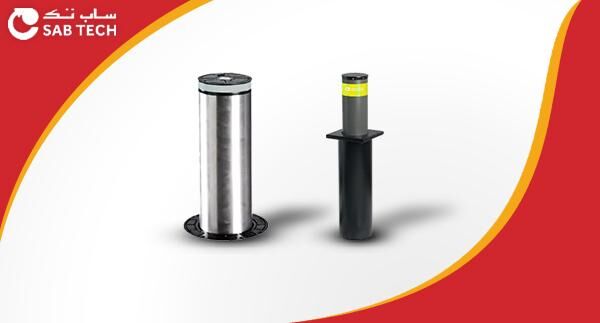Protect Your Road Bollard With These Proven Maintenance Tips

Maintenance is essential for every piece of equipment. And bollards cannot be an exception.
Bollards are a piece of effective equipment for protecting and restricting different indoor and outdoor spaces.
The equipment serves multiple essential purposes–vehicle-pedestrian separation, outlining parking spaces or marking a spot on a coastal path.
But, bollards need periodic maintenance. In the absence of this, you might need to bear the replacement costs.
The Damage Causing Factors
Before you make an effort to understand the best maintenance methodology for your bollards, it is a good idea to figure out what causes damage to the bollards.
Knowing the damage-causing agents can help you discover the susceptibility areas for your bollard. In other words, you will be able to discover from which aspects the initial damage is emanating.
Usually, your bollard can sustain damages from the following two agents:
Environmental Conditions
The environment can take a toll on your bollard barrier. Although the pieces of equipment are specifically designed to withstand adverse weather and environmental conditions, exposure to the conditions over time can cause damage to your bollard.
Harsh environmental agents, such as strong winds, torrential rain, snow, ice, or strong sunshine, can act as damaging agents to your bollard.
Again, saltwater can be another damage-causing agent for your bollard if you use the equipment in coastal environments.
Moreover, vehicle barrier posts in high-traffic areas can be prone to damage caused by particulates and other pollutants.
Human Mistakes
Often mistakes by human beings, especially drivers, can cause damage to boards.
The purpose of protective bollards–on roads and in car parks–is to act as a visual guide to drivers.
But, drivers make mistakes by bumping or scratching their vehicles’ bollards, causing them damage.
Protective bollards often sustain damages due to intentionally mischievous acts by people, such as intentionally damaging them.
Checking Your Bollard
After knowing the main damage-causing agents, it is time to check your bollard for any damage signs.
During the check-up, you should focus on the following aspects:
- Breakdown of surface finish
- Dirt, residue or salt buildup
- Vandalism signs
- Vehicle impact indications
- Subdued performances
- Loose fixings
- Wear and tear
There can be some maintenance work that you can do by yourself. For example, if you know the types of fittings and fixings fit for your bollards, you can carry them with you to use them if necessary during the inspection.
Carrying of Maintenance
You should consider your bollard’s base material before starting maintenance work.
It is important to decide the implements to use during your maintenance.
Using the right implements is not only critical for keeping your bollards in a high utility and aesthetic standard but also to prevent accidentally damaging them.
You can clean your bollard with warm soapy, or warm water mixed with detergent. Although it is a simple method, it can remove surface dirt and improve the aesthetic. For the cleaning, you can use a soft nylon brush.
After the cleaning, you should rinse the bollards with a soft cloth.
The Essential Things to Know About Different Material Bollards
Again, there are some essential things to know regarding bollards of different materials.
Steel Bollards
Typically, bollards, made of steel, bear galvanization for extra protection. So, you should avoid using abrasive cleaning products–they may compromise the galvanization and result in premature rusting.
Although galvanized steel can self-heal minor scratches or knocks, there can be damages beyond its self-healing capacity.
In such a situation, you can use repair paint, which comes in paste or spray.
Post Maintenance Activities
After your maintenance work gets over, you should record all the maintenance activity. In addition, you should detail the methods and products you used apart from the repair work done, if any.
Recording your maintenance activity clears misunderstanding and miscommunication. And can also indirectly save time and money in the future.
Hydraulic bollards provide a high level of security against unauthorized vehicle access, doing away with the need for an outwardly aggressive appearance.
Why Choose SABTECH?
Now, the spontaneous question arises–which supplier should you choose to purchase bollards in Saudi Arabia?
Given its capabilities, SATECH is the first supplier that strikes my mind.
The supplier provides high-security hydraulic road bollards that give reliable protection to high-security risk areas.
The company’s bollards are a perfect solution for calming traffic in areas with a high flow of traffic.
Due to the quality of bollards, SABTECH has carved out a niche of its own as a trusted and high-quality supplier of high-security road bollards, bollards and road blockers in Saudi Arabia.
In addition to supply, SABTECH also provides excellent road bollard maintenance in Saudi Arabia.
Given the quality and expertise of the company, it will not be an exaggeration to say that SABTECH is one of the frontline bollards suppliers in Saudi Arabia.
The company’s hydraulic bollards are also dependable solutions against attacks, theft and robbery and come with the following features:
- Physically impact tested to PAS68 criteria
- Unobtrusive appearance
- Minimal foundation requirement
- Manufactured from heavy gauge materials
- Manual hand pump facility
- Programmable logic control (PLC) system
The company’s automatic rising bollards can find uses in areas with inadequate space to install road blockers.
The excellent bollards actuate a smooth and efficient movement with an electro-hydraulic mechanism.
Moreover, the bollards are often used in conjunction with automatic barriers. A control panel regulates the movement of automatic bollards, which effectively prevent unauthorized access.
Conclusion
Installing bollards entails an investment. So, you should ensure that they last long to give you value for money. Proper maintenance can make them last longer and maintain their looks.